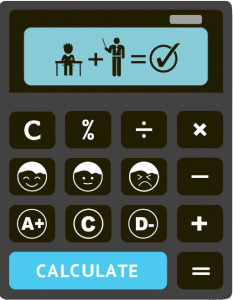Overview
Welcome to year 5 Algebra! Let’s give you a quick idea of what exactly Algebra is, a term you may have already heard about from your friends, parents, or teachers.
Learning Outcomes
After you have read this article, you will be able to:
- Understand the basic concepts of Algebra.
- Solve problems using multiplication and division fact families.
- Identify and apply the commutative, associative, and distributive properties of multiplication.
- Use equivalent number sentences to form and solve equations.
What Is Algebra?
Until now, you have come across number sentences in which the final answers were unknown. For example, what’s \(7\times 3\)? And you knew the answer was 21. Generally speaking, in Algebra, the answer is given, and you are asked to find one of the numbers that led to that answer. So we could say \(7\times ?=21\)?
3 is the only number that can replace the ‘?’ above. We say 3 is the solution (the number that works) to the equation (number sentence) \(7\times ?=21\).
For convenience, we replace the ‘?’ with a letter in English, such as x, y, z, etc. Such a letter (whose value is not known at the beginning) is called an unknown. Then the equation becomes \(7\times x=21\), whose solution is \(x=3\).
Multiplication and Division Fact Families
Consider the equation \(48\div x=6\). To solve for x, you can use the following fact family:
- 6 x 8 = 48
- 8 x 6 = 48
- 48 ÷ 6 = 8
- 48 ÷ 8 = 6
Therefore, x = 8.
Using fact families helps us understand how numbers are related to each other and how we can use that information to solve problems.
Commutative Property
Another important concept in Algebra is the commutative property of multiplication. This property states that when we multiply numbers, the order in which we multiply them does not matter.
For example, \(3\times 4\) is the same as \(4\times 3\). This property also works for addition, but not for subtraction and division. For example, 3 + 4 is the same as 4 + 3, but 3 – 4 is not the same as 4 – 3.
Associative Property
The associative property of multiplication is another important concept in Algebra. This property states that when we multiply three or more numbers, the way we group them does not matter.
For example, \((2\times 3)\times 4\) is the same as \(2\times (3\times 4)\). This property also works for addition, but not for subtraction and division.
Distributive Property
This property states that when we multiply a number by a sum or a difference, we can distribute the multiplication over each term in the sum or difference.
For example, \(3\times (4+5)\) is the same as \(3\times 4+3\times 5\).
You can also use the distributive property to multiply larger numbers, such as
\(235\times 8=200\times 8+30\times 8+5\times 8=1,600+240+40=1,880\).
Equivalent Number Sentences
Equivalent number sentences are two or more number sentences that have the same value. You can use them to form and find unknown values in numerical equations. Here’s an example:
We know that \(4\times 5=20\) and \(40\div 2=20\). Therefore, the solution to the equation \(4\times 5=40\div x\) is 2.
Wrap Up
Algebra forms a very significant part of Maths in school and beyond. If you want to do well in Maths, you must master Algebra. Do you think you need some help understanding Algebraic concepts or any other concept from year 5 Maths? Feel free to get in touch with us today.






